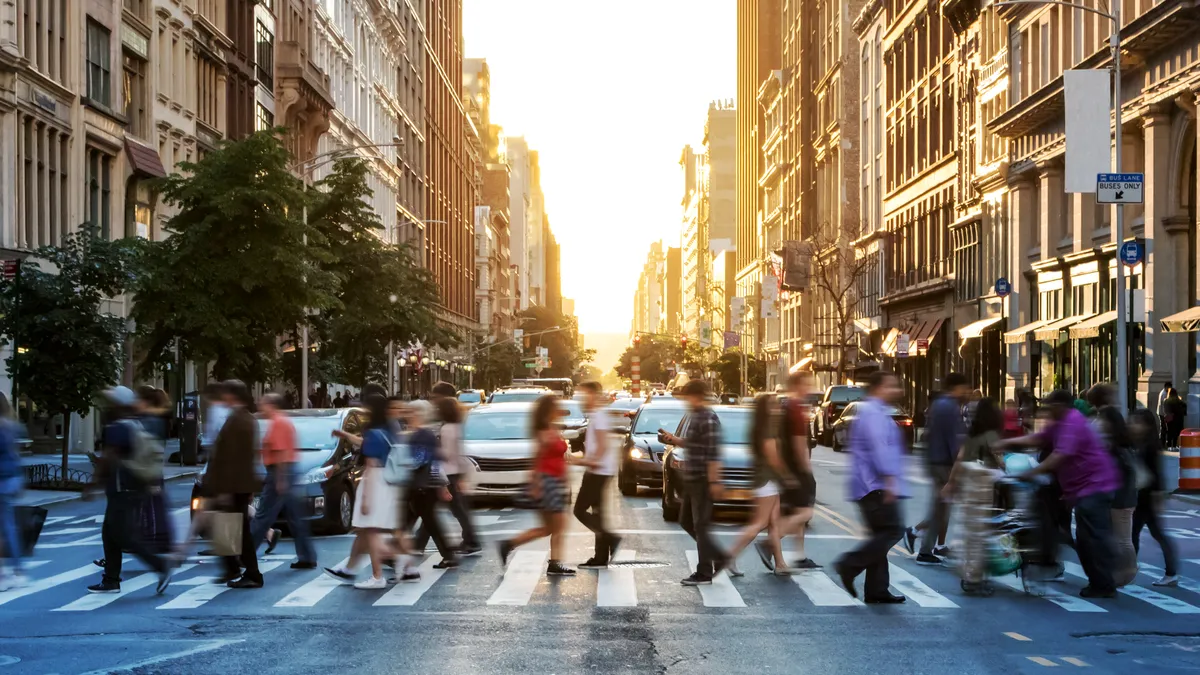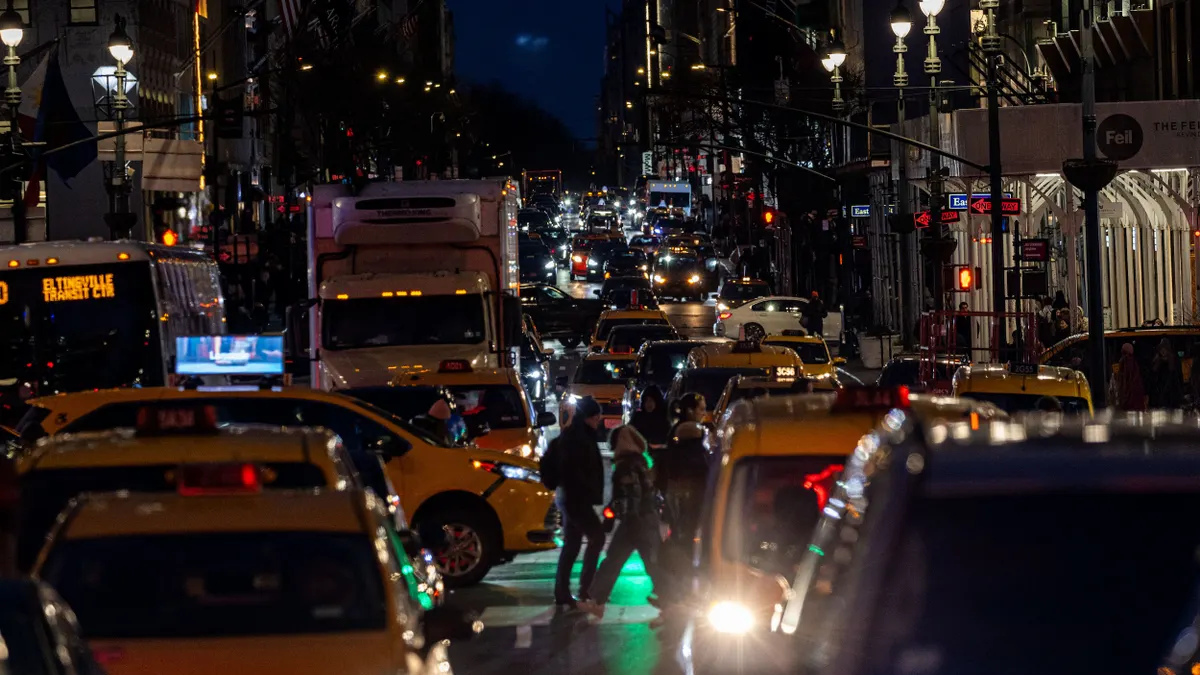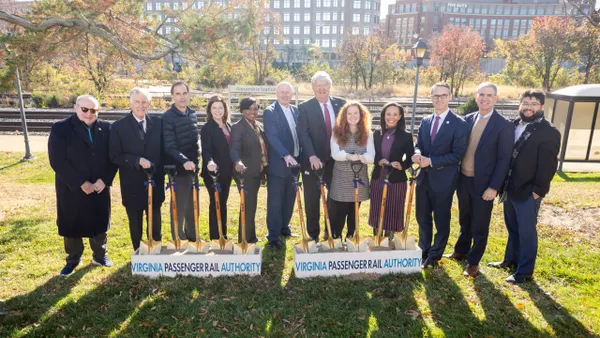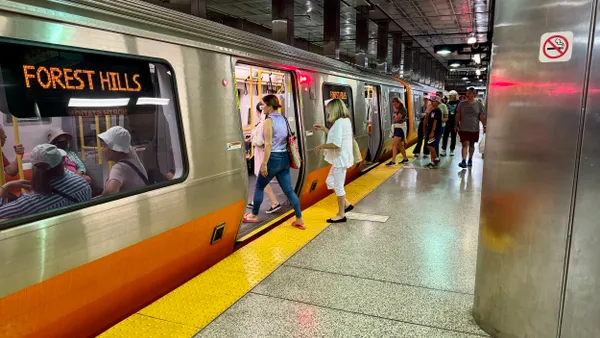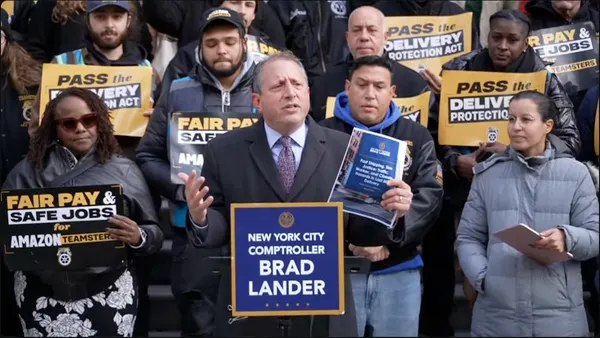Dive Brief:
- Pedestrian deaths in the U.S. fell for the second straight year in 2024 but remain nearly 20% higher than in 2016, according to a Governors Highway Safety Association report released today based on preliminary data.
- Drivers killed 7,148 people last year, with more than three quarters of pedestrian fatalities taking place after dark. Nearly two-thirds of deaths occurred in places lacking sidewalks.
- More than half of pedestrian deaths happened in collisions with SUVs and pickup trucks. These vehicles accounted for 54% of fatalities.
Dive Insight:
Pedestrian fatalities rose from 4,779 in 2013 to a high of 7,593 in 2022 before beginning to decline, according to data from the National Highway Traffic Safety Administration. Pedestrian deaths are increasing faster than overall traffic fatalities, the GHSA said, and now account for nearly one-fifth of all traffic-related deaths in the U.S.
The GHSA report found that alcohol use played a role for both drivers and pedestrians. Speeding accounted for 8.1% of pedestrian fatalities in 2023, using data from NHTSA’s Fatality Analysis Reporting System. A quarter of deaths involved drivers who left the scene of the accident.
The nation’s 10 most populous cities, which together accounted for 766 pedestrian deaths in 2023, saw a 9.6% decrease from the prior year, according to the report. New York City and San Diego achieved the largest declines, while San Antonio, Texas, was the only one of the 10 to see an increase in fatalities.
New Mexico was the deadliest state in the nation for pedestrians in 2024, recording 4.41 deaths per 100,000 population, according to GHSA preliminary data. Arizona, Delaware, Louisiana, Mississippi and Nevada all had more than 3 fatalities per 100,000 population, compared to the national rate of 2.10. Kentucky, South Carolina and Wyoming all lowered their pedestrian fatality rates by more than 0.50 points.
A number of states have implemented targeted educational outreach to improve pedestrian safety. Illinois and Maryland, for example, created programs geared to school-age children. Connecticut and Rhode Island developed safety campaigns geared toward older pedestrians.
Using crash data, Maine is focusing its outreach efforts on urban areas, while South Carolina is using social media and billboard advertising in the 10 counties with the highest number of pedestrian fatalities.
Greater attention among all levels of government is being directed toward vulnerable road users such as pedestrians and bicyclists, the report states. Tactics include road designs that foster safer vehicle speeds, refuge islands along wide roads and traffic signals at intersections that allow pedestrians to cross before cars.
Law enforcement plays an important role in addressing dangerous driving behaviors that place pedestrians at risk, the report says. Most of this enforcement occurs at the local level and often focuses on speeding, distracted driving or driving while impaired.
California, Washington, D.C., and some other states conduct operations using plain clothes officers at crosswalks. When they observe drivers who do not yield the right of way to pedestrians, they alert other officers stationed ahead to pull those motorists over for a citation or warning. California, Indiana and Utah also have programs to enforce laws requiring drivers to stop for a stopped school bus, helping to prevent injuries to children.
“The second straight year of fewer pedestrian deaths is a step in the right direction, but much more must be done to protect people walking,” said GHSA Chief Executive Officer Jonathan Adkins in a statement. “Now is the time to double down on what works — more and better infrastructure, enforcement to deter dangerous driving behaviors, engaged and informed communities, and vehicles designed to protect people on foot.”



